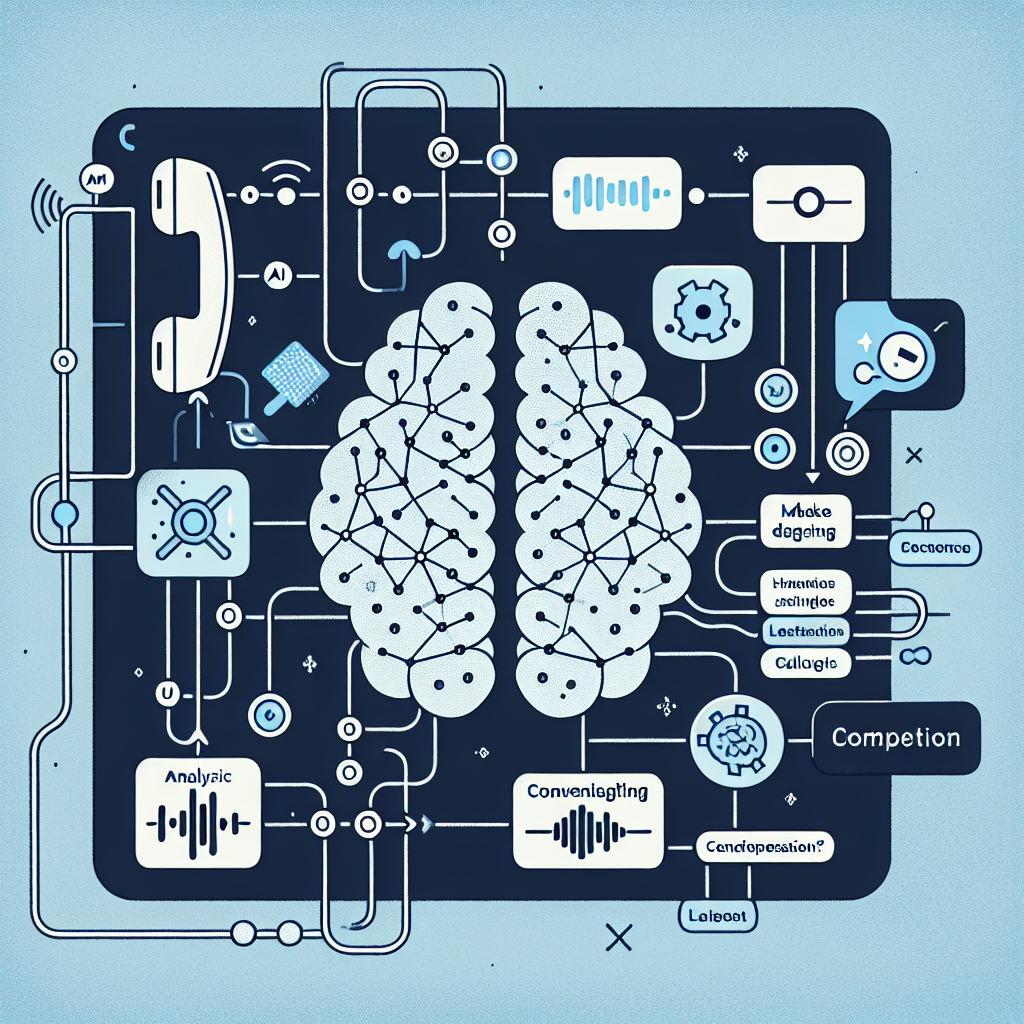
In the evolving world of business communication technologies, one revolutionary development that's creating waves is the advent of AI-Driven Call Tagging. By bringing machine learning algorithms and natural language understanding into the mix, this tool is significantly reshaping the way businesses analyze and retrieve information from their calls. Integral to understanding its impacts, this section provides an introduction to AI-Driven Call Tagging, from its core working principles to its wider real-world applications.

At its most basic, AI-Driven Call Tagging involves the usage of artificial intelligence to categorize calls based on their content. Using advanced natural language processing (NLP), these AI systems can comprehend the caller's sentiments, language nuances, and context to tag calls accurately. Once calls are tagged, they can be easily retrieved or analyzed based on these tags. These systems can identify trends, monitor agent performance, improve customer satisfaction, and more, making them a boon for customer service operations.
Behind these capabilities lie some powerful algorithms and machine learning principles. These systems undergo extensive training where they are fed many examples – calls with different contexts, moods, dialects, and so on. Based on this training, these systems 'learn' to accurately tag and categorize future calls. Fundamentally, AI-Driven Call Tagging works based on these deep learning principles.
In the subsequent sections, we will delve deeper into how AI-Driven Call Tagging is improving search capabilities and analytics in business communications, providing real world examples of its implementation and weighing its pros and cons for further clarity.
Call centers are increasingly harnessing the power of artificial intelligence to streamline their operations. In particular, AI-Driven Call Tagging has emerged as a transformative tool that substantially improves the search and analytics capabilities of these platforms. But exactly how is this realized? Herein, we delve into the manifold benefits of this innovative application of AI.
Primarily, AI-Driven Call Tagging enhances the searchability of call records. Through automated tagging, AI technology categorizes each call based on several parameters including the purpose of the call, customer mood, product or service inquiries, resolution status, and more. This classification simplifies and refines the search process, enabling call centers to quickly and efficiently retrieve relevant call data. Thus, instead of manually sifting through an overwhelming number of calls, they can leverage AI to expedite the process. Read more about AI enhanced searchability.
Improved analytics accuracy is another key benefit of AI-Driven Call Tagging. The accurate tagging of calls enables the extraction of dependable insights, which can significantly enhance decision-making processes in an organization. AI-Driven Call Tagging can accurately analyze call data, trends, and patterns which are pivotal in monitoring agent performance, improving KPIs, and revamping customer service strategies. Discover more on the role of AI in improving analytics accuracy.
Lastly, AI-driven call tagging improves customer interaction tracking. With it in place, there are better means of quantifying and assessing each customer's experience and interaction. AI technology provides a more detailed, holistic view of your customer interactions, thereby fine-tuning your customer relationship management (CRM) tactics. Furthermore, this streamlined process ensures that no critical interactions are overlooked, enabling a high-quality, personalized customer service strategy. Explore more about how AI-driven call tagging improves customer interaction.
Unquestionably, the integration of AI in call tagging is revolutionizing call center operations. The benefits are many and vivid –from enhanced searchability of call records, through improved analytics accuracy, to a better customer interaction tracking. The amalgamation of AI and call tagging is indeed a breakthrough innovation, paving the way for more efficient and effective call center operations.
AI-driven call tagging systems are revolutionary in the way they streamline data handling, particularly when integrated directly with Customer Relationship Management (CRM) systems. When these two powerhouse solutions work in tandem, businesses can expect enhanced data collection and expedited retrieval of valuable customer information.
But how exactly does this integration work and bring about improvements in search and analytics capabilities? The answer lies in the intelligence and automation offered by AI-driven call tagging systems. These sophisticated systems intelligently analyze every customer interaction, including calls, to identify the core topics and sentiments expressed. The processed data is then tagged, labeled, and stored in the CRM systems. This integration allows the tagged information to be easily retrievable for analytics, reporting, or search purposes. For a concrete example of this in action, HubSpot's CRM platform is a strong model.
This harmonization of technology is a significant boost to the development of personalized customer communication strategies. By interpreting, tagging, and storing call data, CRM systems can provide a comprehensive view of every customer’s history and preferences. This deep insight enables businesses to tailor their communications in a way that suits each individual customer.

To sum it up, AI-driven call tagging's integration with CRM systems is redefining the capabilities of businesses in search and analytics. It isn't just about having more data; it's about making that data more accessible, actionable, and personalized for the betterment of the customer experience. With the constant advancements in AI technology, it's safe to say that the possibilities in this integration are endless.
Keep an eye out for further developments and consider how they can be leveraged for your own business strategy.The transformative power of AI-Driven Call Tagging is being harnessed in different industries to take search and analytics capabilities to higher levels. From healthcare to finance, different sectors are reaping remarkable benefits from this innovative technology.
Take the sales industry, Zendesk reports that agents using AI-driven call tagging can identify key themes across customer calls, enabling them to zero in on common customer queries or issues. This expedites response times, drives efficiencies and improves overall customer satisfaction. Through the AI’s machine learning capabilities, call tagging becomes a process of continuous improvement, always adapting and evolving with the company's needs.
In the insurance industry, Insurtech Digital highlights how AI-driven call tagging aids in the identification of fraud patterns. It analyzes calls, flags certain keywords or phrases that may be indicative of a scam, resulting in considerable savings in fraud prevention. Not only does this safeguard mass revenue loss but it also aids the insurance companies to refine their risk assessment models.
Meanwhile, in healthcare, National Center for Biotechnology Information (NCBI) found that call tagging AI has greatly improved patient service delivery. By analyzing calls between healthcare providers and patients, AI-Driven call tagging identifies common questions, leading to the creation of an optimized API of FAQs for healthcare providers. Knowledge delivery becomes faster and more precise, resulting in improved patient care.
Government organizations are leveraging AI-driven call tagging technology to improve public service. For instance, GovTech explains how the technology enables faster semantics analysis of citizen calls, lets administrators identify key issues facing the public, and aids in policy development.
The applications of AI-Driven Call Tagging are both wide-ranging and substantial. The ability of machine learning models to identify key themes, patterns, and trends from thousands of calls, and convert them into actionable intelligence is proving invaluable. Its potential is vast and we are just at the cusp of realizing its full potential.
The transition towards using AI-driven call tagging to bolster the search and analytics capabilities of companies is undoubtedly an exciting development. However, like any significant technological shift, there are potential challenges and considerations to bear in mind.

Data privacy is one of the foremost concerns when it comes to using AI technologies, and this is particularly relevant in the case of call tagging. With AI, the automated transcription and tagging of telephone calls inevitably involves the processing and storage of sensitive customer information. Businesses need to ensure this process respects privacy laws and maintains customer trust.
Another notable challenge arises from the need for regular and ongoing AI training and updates. AI algorithms learn from data and hence, require continuous input to not only enrich their insights but also maintain their learning curve at top capacity. This calls for a consistent investment of resources from the organization.
While the promise of enhanced search and analytics capabilities is attractive, it's important for businesses to consider these potential challenges carefully. Implementing AI-driven call tagging is a strategic decision, requiring careful management of data privacy and technical resources. By noting these considerations and taking the necessary precautions, businesses can leverage this technology to its true potential.
As we enter a new era of technology and data-driven decision-making, the trend towards incorporating machine learning and artificial intelligence (AI) in everyday business processes continues to gain momentum. One area where this revolution is making a significant impact is business communications, in particular, in the realm of AI-Driven Call Tagging.
Forward thinking businesses are increasingly leveraging AI-driven call tagging capabilities not just to simplify the humongous task of call cataloging but also to extract meaningful insights to drive business strategies. VOZIQ, for example, is an established player that offers voice analytics to surface insights from customer interactions and assist with predictive modeling.
Looking into the future, the perfect symbiosis of AI and machine learning promises cutting-edge developments in call tagging technology. As these technologies mature, they will offer improved search and
Increasingly, more nuanced call tagging will become feasible, allowing businesses to identify and evaluate details of the discussion that would be challenging to capture with more simplistic tagging methods. For instance, AI will be able to discern moods, emotional tones, or even caller intent — insights that can significantly enhance customer relationship management. The trend of voice recognition combined with AI will also continue to rise potentially making automated call cataloging, sentiment analysis, and data-driven decision-making smoother and more efficient than ever.
Additionally, real-time call tagging, enabled by advancements in AI and machine learning, has the potential to revolutionize real-time analytics in business communication. With this new capability, businesses will be able to act quicker, predicting issues before they become problems, and devise proactive solutions - thus significantly improving the customer experience.
In essence, as the capabilities of AI continue to expand and evolve, businesses can look forward to unprecedented advancements in call tagging technology, driving optimization and efficiency in communication analytics.
Start your free trial for My AI Front Desk today, it takes minutes to setup!








